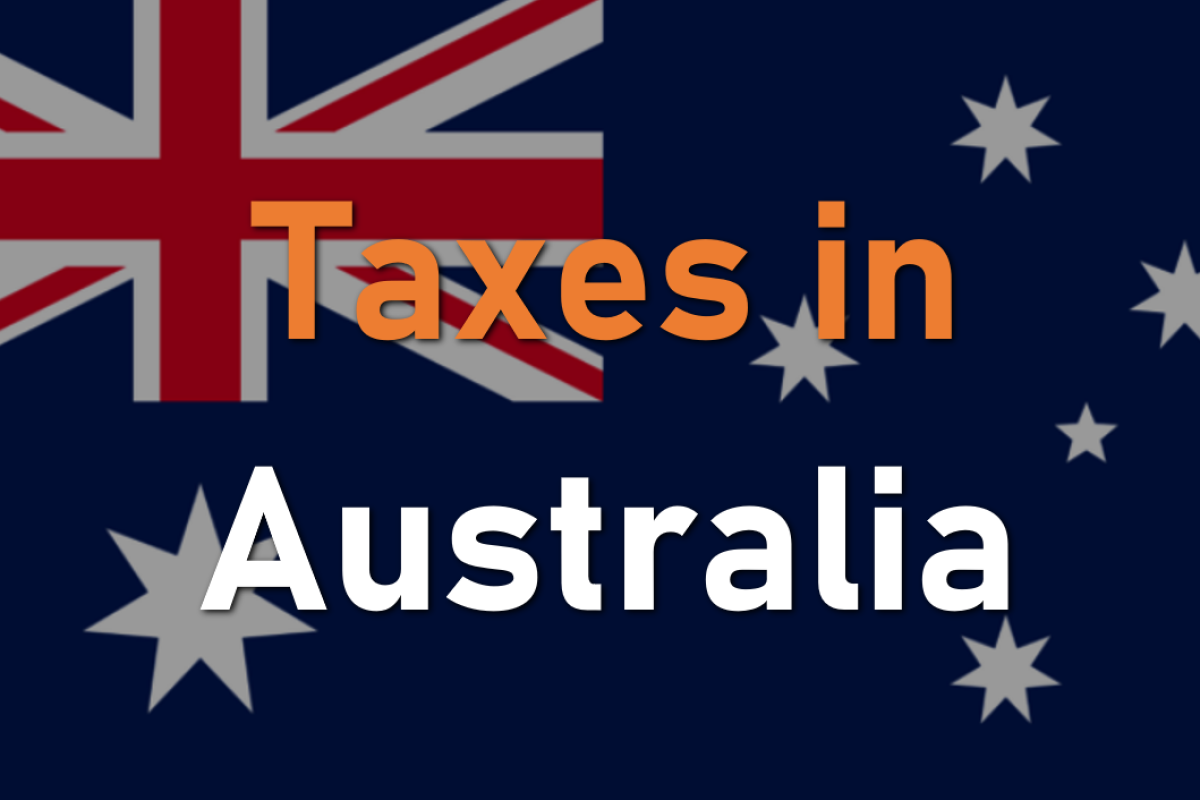Understanding the Australian tax system is crucial for businesses aiming to expand their operations or manage a workforce in the country. Whether using an Employer of Record (EOR) or Professional Employer Organization (PEO), a firm grasp of Australia’s tax landscape ensures compliance and smooth business functioning. This guide highlights the key taxes for employers and employees in Australia.
1. Corporate Income Tax (CIT)
Corporate Income Tax (CIT) is a primary tax levied on the profits of businesses operating in Australia. Companies must adhere to CIT regulations, regardless of whether they are residents or non-residents, based on their operations in the country.
|
Tax Type |
Rate |
Applicable to |
|---|---|---|
|
Corporate Income Tax (CIT) |
30% |
Standard rate for most companies |
|
Lower CIT Rate |
25% |
Base rate entities with a turnover less than AUD 50 million and deriving 80% or less of their income from passive sources |
Additional Details: Certain small and medium-sized businesses qualify for a reduced tax rate (25%) if they meet specific criteria. The general CIT rate for larger businesses remains at 30%. Deductions, including R&D tax offsets, asset write-offs, and deductions for operational expenses, can significantly reduce tax liabilities.
Outcome: Accurate classification of a company and taking advantage of available deductions is crucial to optimizing corporate tax obligations in Australia.
2. Individual Income Tax (PIT)
Australia operates a progressive individual income tax system that increases with income levels. Both residents and non-residents are subject to tax, though residents have a broader tax liability, covering worldwide income.
|
Income Bracket (AUD/year) |
Tax Rate |
|---|---|
|
0 – 18,200 |
0% |
|
18,201 – 45,000 |
19% |
|
45,001 – 120,000 |
32.5% |
|
120,001 – 180,000 |
37% |
|
Above 180,000 |
45% |
Medicare Levy: A standard 2% levy applies to most taxpayers, funding public healthcare. There is also an additional surcharge for higher-income individuals without private health insurance.
Additional Details: Taxpayers can access various deductions, such as for work-related expenses, charitable donations, and educational expenses. A tax-free threshold of AUD 18,200 is applicable to residents, and PAYG (Pay As You Go) withholding ensures regular tax payments throughout the year.
Outcome: Employers are responsible for ensuring correct tax withholdings from wages. Failure to accurately manage these withholdings may lead to penalties and audits.
3. Goods and Services Tax (GST)
GST is a broad-based consumption tax applied to most goods and services sold or consumed in Australia. Businesses with a turnover exceeding AUD 75,000 must register for GST.
|
GST Rate |
Applicable to |
|---|---|
|
10% |
Most goods and services |
|
0% |
Exports, health, and education services (exemptions) |
Additional Details: Registered businesses must issue tax invoices and regularly file GST returns. Input tax credits allow businesses to reclaim the GST paid on purchases related to business activities, reducing their net tax liability.
Outcome: Correct registration, timely reporting, and accurate invoicing are essential to comply with GST requirements and avoid fines.
4. Pay-As-You-Go (PAYG) Withholding Tax
PAYG withholding is a system where employers deduct income tax directly from employees’ wages and remit it to the Australian Taxation Office (ATO).
|
Contribution Type |
Employer Responsibility |
|---|---|
|
PAYG Withholding |
Deduct and remit income tax from employee wages |
Additional Details: PAYG withholding includes not only income tax but also superannuation contributions. Employers are required to issue a PAYG Payment Summary to employees annually, detailing the tax withheld.
Outcome: Proper and timely PAYG deductions are critical to avoiding compliance issues and penalties from the ATO.
5. Superannuation Contributions
Australia’s superannuation system mandates that employers contribute a percentage of employees’ earnings to a superannuation fund for retirement savings.
|
Contribution Type |
Employer Rate |
|---|---|
|
Superannuation Guarantee |
11% (as of 2024) |
Additional Details: The Superannuation Guarantee (SG) rate is legislated to increase incrementally, reaching 12% by 2025. Contributions must be made quarterly, with penalties for late or insufficient contributions. Employees can also make voluntary contributions, which may offer tax benefits.
Outcome: Employers must manage superannuation contributions accurately and on time to comply with regulations and avoid fines.
6. Fringe Benefits Tax (FBT)
FBT is a tax paid by employers on non-cash benefits provided to employees, such as company cars, entertainment, and housing.
|
Tax Type |
Rate |
Applicable to |
|---|---|---|
|
Fringe Benefits Tax (FBT) |
47% |
Non-cash benefits provided to employees |
Additional Details: The FBT year runs from April 1 to March 31, with annual returns due shortly thereafter. Employers can apply certain exemptions and concessions, such as for electric cars or minor benefits. The taxable value of fringe benefits is adjusted based on the employee’s income bracket.
Outcome: Proper FBT calculation and timely filing are necessary to avoid penalties and ensure tax compliance.
7. Payroll Tax
Payroll tax is a state-based tax levied on employers whose total wages exceed the respective state’s threshold.
|
State |
Threshold (AUD) |
Payroll Tax Rate |
|---|---|---|
|
New South Wales |
1.2 million |
5.45% |
|
Victoria |
700,000 |
4.85% |
|
Queensland |
1.3 million |
4.75% – 4.95% |
|
Western Australia |
1 million |
5.5% |
|
South Australia |
1.5 million |
4.95% |
|
Tasmania |
2 million |
4% |
|
Australian Capital Territory |
2 million |
6.85% |
|
Northern Territory |
1.5 million |
5.5% |
Additional Details: The payroll tax rate and threshold vary significantly across states. Larger employers often need to manage compliance across multiple jurisdictions, which requires a detailed understanding of state-specific requirements.
Outcome: Monitoring and managing payroll obligations across different states is critical to ensure full compliance and to mitigate any potential fines.
Additional Important Taxes and Compliance Requirements
1. Capital Gains Tax (CGT)
Capital gains tax applies to profits made from the sale of assets, integrated into both the individual and corporate income tax systems.
|
Tax Type |
Rate |
|---|---|
|
Capital Gains |
Part of CIT/PIT rates |
Additional Details: Individuals and businesses can access CGT concessions, such as the 50% discount for assets held longer than 12 months. Special rules apply for small businesses, offering further reductions or exemptions.
Outcome: Careful planning around asset disposals can optimize tax strategies and reduce CGT liabilities.
2. Land Tax
Land tax is a state-based tax imposed annually on landowners for properties that are not their primary residence.
|
State |
Rate Range |
Threshold |
|---|---|---|
|
New South Wales |
1.6% – 2% |
AUD 969,000 |
|
Victoria |
0.2% – 2.25% |
AUD 300,000 |
|
Queensland |
0.75% – 2.25% |
AUD 600,000 |
|
Western Australia |
0.09% – 2.67% |
AUD 300,000 |
Outcome: Understanding land tax implications is essential for companies with real estate holdings, as rates and exemptions vary by state.
3. Luxury Car Tax (LCT)
The LCT is a tax on cars that exceed the luxury car threshold, aimed at promoting the purchase of fuel-efficient vehicles.
|
Tax Type |
Rate |
Threshold (AUD) |
|---|---|---|
|
Luxury Car Tax |
33% |
$76,950 for fuel-efficient cars; $69,152 for others |
Outcome: Proper classification and declaration of vehicle purchases ensure compliance and avoid unexpected tax burdens.
Tax Filing and Compliance Obligations in Australia
Meeting tax deadlines is critical to avoid penalties and interest charges.
|
Tax Type |
Filing Requirement |
|---|---|
|
Corporate Income Tax |
Annual, based on fiscal year |
|
Personal Income Tax |
Annual, by October 31st (individuals) |
|
GST |
Monthly/Quarterly/Annually |
|
PAYG Withholding |
Monthly/Quarterly |
|
FBT |
Annually by May 21st |
Outcome: Regular, accurate filings are necessary for compliance. Australia’s ATO provides a comprehensive online system for digital lodgment.
Tax Residency in Australia
-
Corporate Residency: Companies are considered residents if they are incorporated in Australia or if central management and control occur within the country.
-
Individual Residency: Individuals become residents for tax purposes if they reside in Australia, even temporarily, or meet specific residency tests based on time spent and economic connections.

